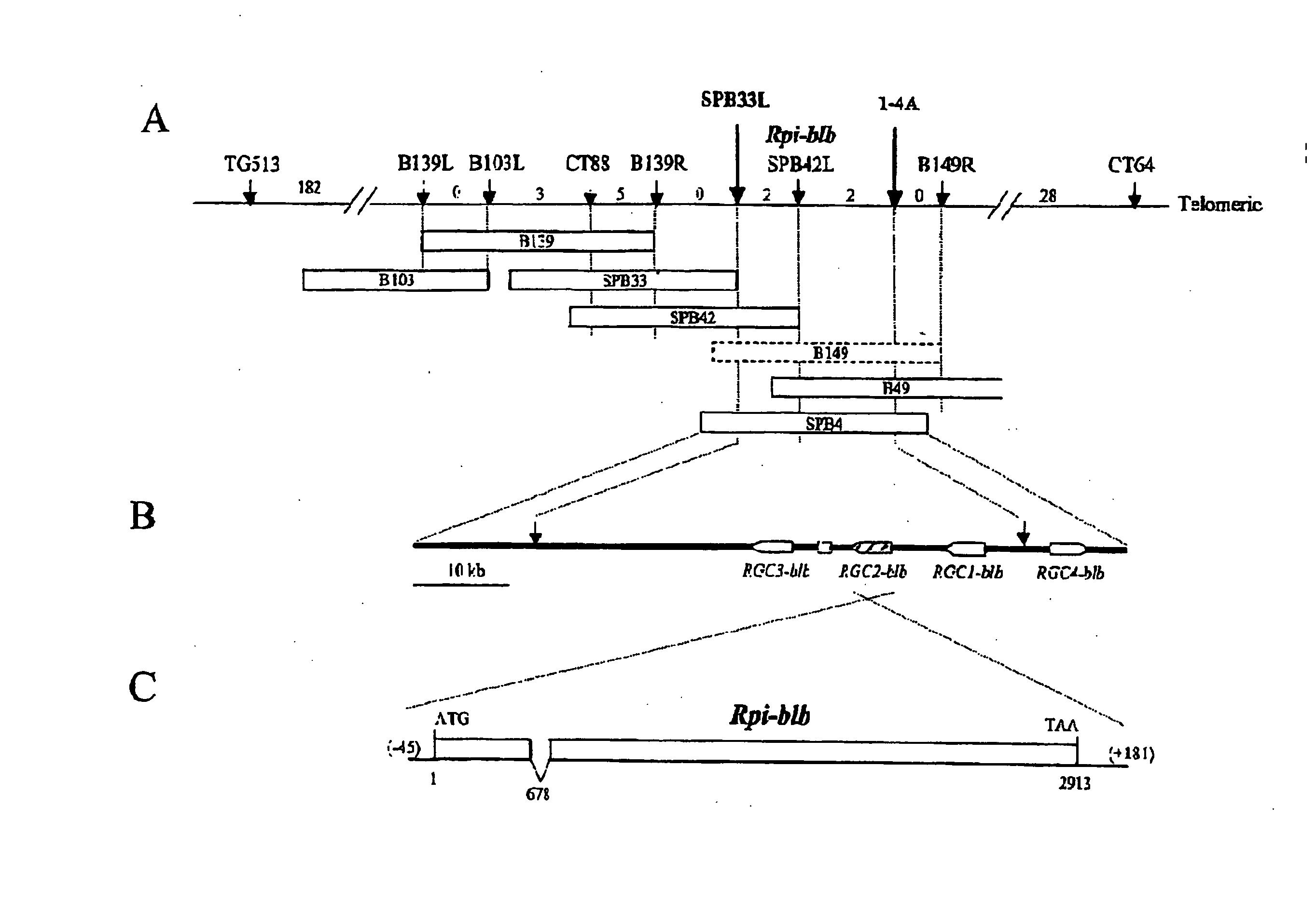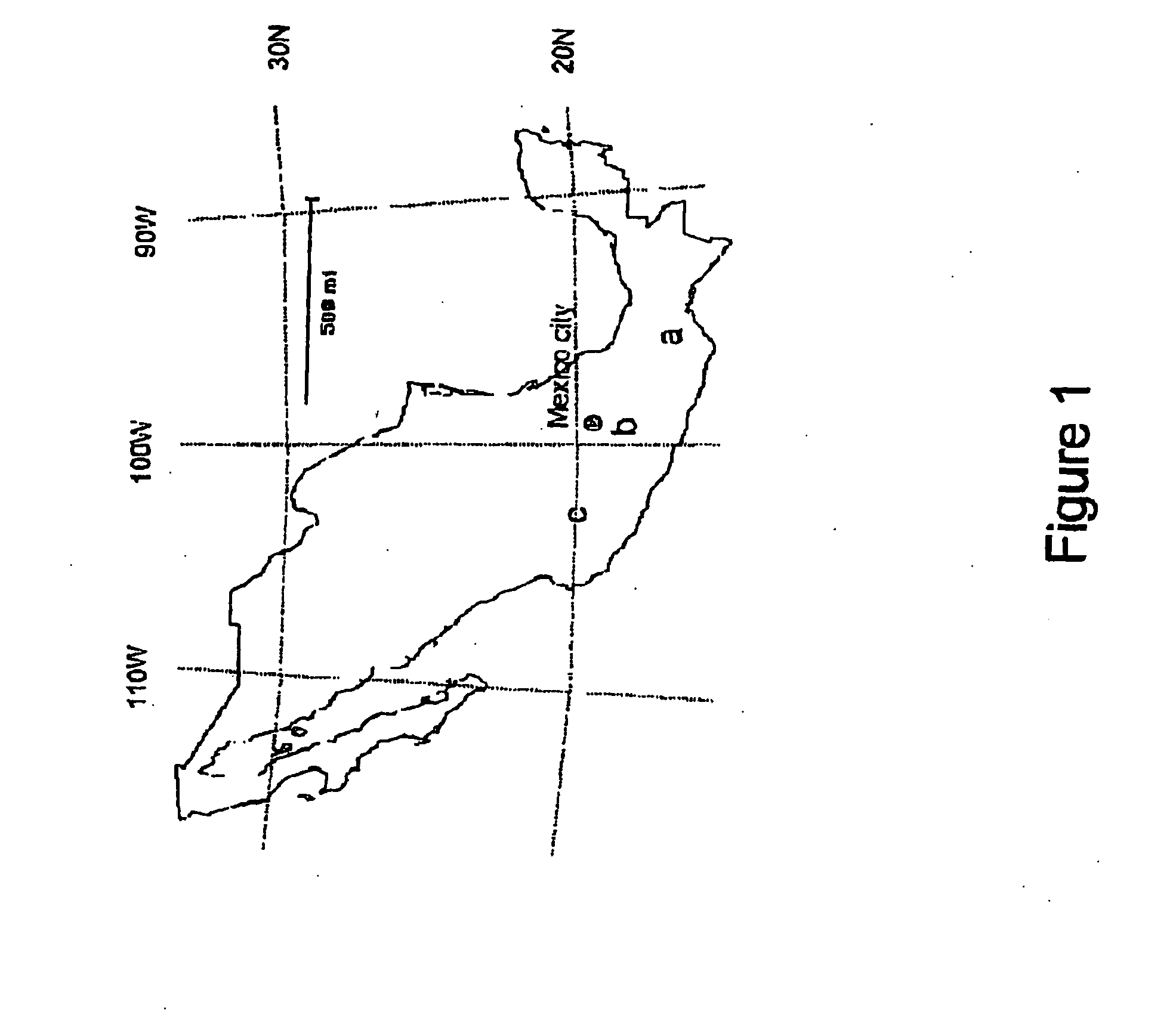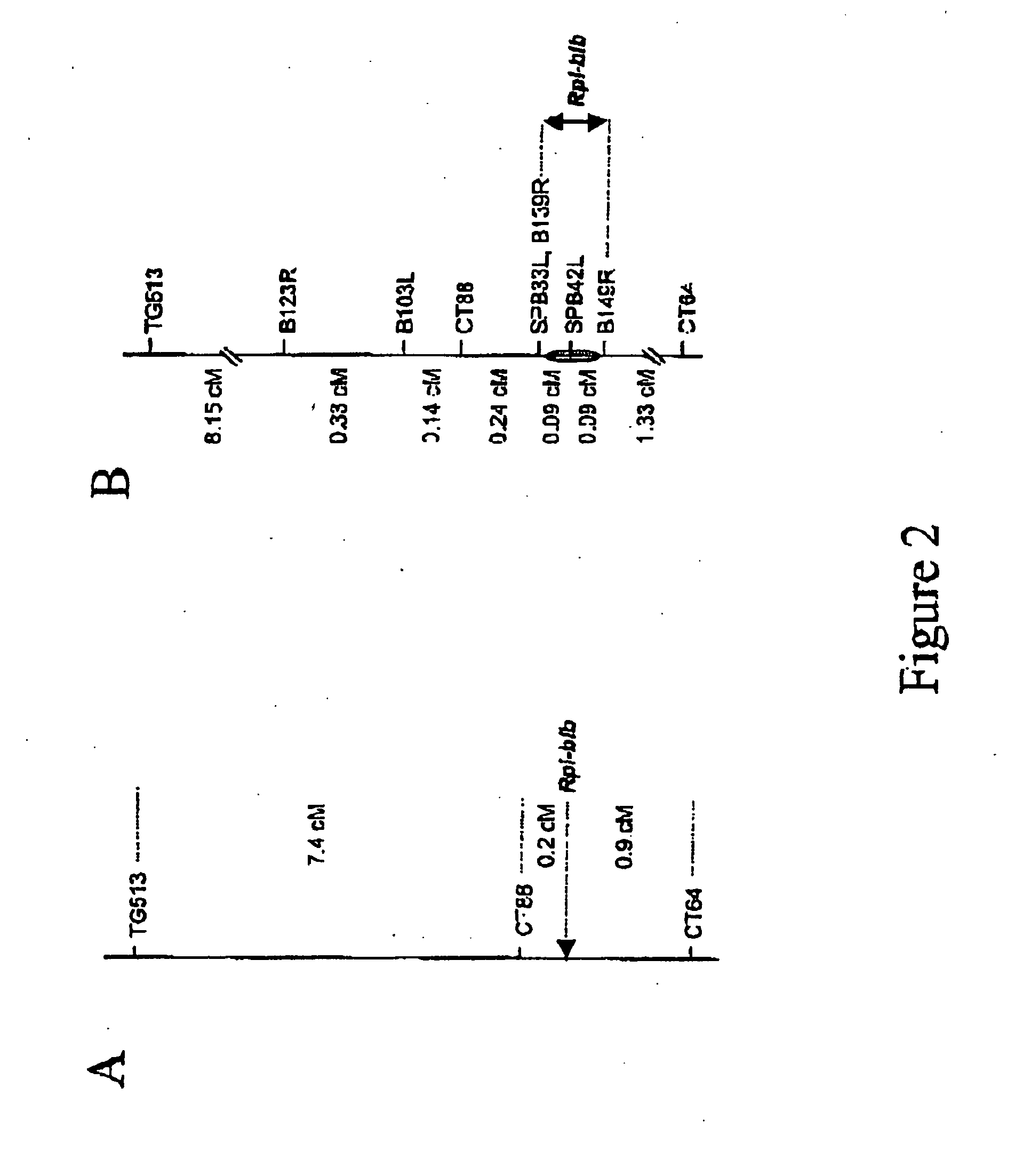Isolated nucleic acids encoding resistance polypeptides and uses thereof
a technology of resistance polypeptides and nucleic acids, applied in the field of plant diseases, can solve the problems of threatening the tomato crop, difficult chemical control of the disease, and widespread environmental burden of application of crop protectionants
- Summary
- Abstract
- Description
- Claims
- Application Information
AI Technical Summary
Problems solved by technology
Method used
Image
Examples
example 1
[0065] The phenotype of S. bulbocastanum and transgenic S. tuberosum genotypes for resistance to P. infestans was determined by detached leaf assays. Leaves from plants grown for 6 to 12 weeks in the greenhouse were placed in pieces of water-saturated florists foam, approximately 35×4×4 cm, and put in a tray (40 cm width, 60 cm length and 6 cm height) with a perforated bottom. Each leaf was inoculated with two droplets or more (25 μl each) of sporangiospore solution on the abaxial side. Subsequently, the tray was placed in a plastic bag on top of a tray, in which a water-saturated filter paper was placed, and incubated in a climate room at 17° C. and a 16 h / 8 h day / night photoperiod with fluorescent light (Philips TLD50W / 84HF). After 6 days, the leaves were evaluated for the development of P. infestans disease symptoms. Plants with leaves that clearly showed sporulating lesions 6 days after inoculation were considered to have a susceptible phenotype whereas plants with...
example 2
Mapping of the Rpi-blb Resistance Locus
Plant material
[0066] In order to produce an intraspecific mapping population that segregated for the P. infestans resistance gene present in S. bulbocastanum accession BGRC 8005 (CGN 17692, P1275193), a susceptible S. bulbocastanum genotype was required. Several S. bulbocastanum accessions originating from different clusters / areas in Mexico were analysed for P. infestans resistance or susceptibility in a detached leaf assay (Table 1 and FIG. 1). In accession BGRC 8008 and BGRC 7999 no susceptibility was detected. In accession BGRC 8005, BGRC 8006 and BGRC 7997 susceptibility was only present in 9%, 7% and 14% of the analysed seedlings, respectively. Thus, only a few susceptible S. bulbocastanum genotypes were obtained.
[0067] The intraspecific mapping population of S. bulbocastanum (B8) was produced by crossing a P. infestans susceptible clone of accession BGRC 8006 with a resistant clone of accession BGRC 8005. DNA of 2109 progeny plants wa...
example 3
Construction of a S. Bulbocastanum BAC Library and Construction of a contiguous BAC contig spanning the Rpi-blb Locus
BAC Library Construction
[0072] A resistant clone of S. bulbocastanum (bib) accession BGRC 8005 (CGN 17692, PI 275193) heterozygous for the Rpi-blb locus, was used as source DNA for the construction of a genomic BAC library, hereafter referred to as the 8005-8 BAC library. High molecular weight DNA preparation and BAC library construction were carried out as described in Rouppe van der Voort et al. (1999 MPMI 12:197-206). Approximately 130.000 clones with an average insert size of 100 kb, which corresponds to 15 genome equivalents were finally obtained. A total of approximately 83.000 individual clones were stored in 216 384-well microtiter plates (Invitrogen, The Netherlands) containing LB freezing buffer (36 mM K2HPO4, 13.2 mM KH2PO4, 1.7 mM citrate, 0.4 mM MgSO4, 6.8 mM (NH4)2SO4, 4.4% V / V glycerol, 12.5 μg / ml chloramphenicol in LB medium) at −80° C. Another 50.0...
PUM
| Property | Measurement | Unit |
|---|---|---|
| height | aaaaa | aaaaa |
| width | aaaaa | aaaaa |
| width | aaaaa | aaaaa |
Abstract
Description
Claims
Application Information
 Login to View More
Login to View More - R&D
- Intellectual Property
- Life Sciences
- Materials
- Tech Scout
- Unparalleled Data Quality
- Higher Quality Content
- 60% Fewer Hallucinations
Browse by: Latest US Patents, China's latest patents, Technical Efficacy Thesaurus, Application Domain, Technology Topic, Popular Technical Reports.
© 2025 PatSnap. All rights reserved.Legal|Privacy policy|Modern Slavery Act Transparency Statement|Sitemap|About US| Contact US: help@patsnap.com



